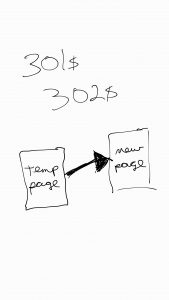
301 and 302 redirects can create new challenges in making content appear in search queries
Building a customer experience that includes a website means more than being visible online. It also means managing the negative aspects of a digital presence - removing duplicate pages and staying alert for usage of a business name.
To do this, consider the following tips to keep a digital presence as pristine as possible.
- Examine 302 redirects - make sure that the temporary redirects are managed correctly. That means examining how the pages appear in a search query, because a older page that is deprecated against the newer, temporary page can be viewed as obsolete and thus ignored by the search engine, though there are signs that 302s won't impact pagerank (Google just explained this, according to Search Engine Land)
- Be leery of 301 chains - numerous permanent redirects in a series can seem spammy to search engines, leading to delisting on search engines. It also impacts the latency for a site by creating unnecessary page calls to a server.
- Make sure the site map is up to date to reflect the site pages and associated sites.
- Examine how the site is loading with page speed reports. Pingdom and Yottaa can examine how a site loads relative to a server. These can indicate fishy server calls that slow down a site experience.
- Audit the site for duplicate pages. Siteliner offers a free and premium tool for identifying duplicate content as well as broken links.
- Be aware of online copies of your site text. Use a plagiarism checker like Copyscape to discover other sites that may be mimicking your site. The results can yield potential phishing sites and well as sites that scrape content.
- Keep Google Alerts for usage of your company name, products, and other brand as needed. Alerts can help you discover new allies for your business, as well as nefarious sites that have scraped and copied the site.
- Use the Page Load Speed report within Google Analytics to note spikes in page loads. Increasing the page load can encourage site visitors to leave a site rather than view other pages or material.

[…] Another, Content Forest,has a 301 and 302 creator online. For more on the difference on 302s and 301s, read this brief Zimana post. […]